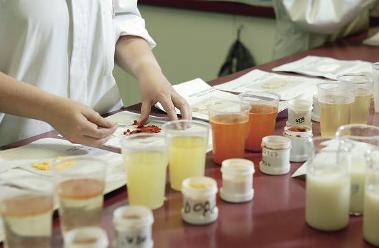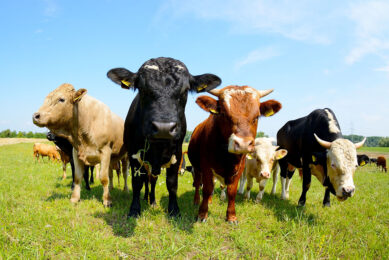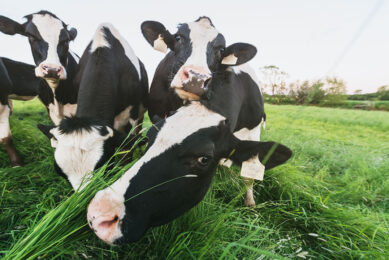Quality control: From business cost to brand value

Only 5% of EU food safety notifications in 2007 came from checks within a company, whereas 91% originated from regulatory authorities, and 4% from consumers. With some product recalls costing millions of euros these figures suggest that operators in the food chain should pay more attention to internal quality control – and to upstream suppliers.
By Dr Elinor McCartney, Pen & Tec Consulting
For consumers, safety is the most important food ingredient, according to Androulla Vassiliou, European Commissioner for Health. Indeed, the EU mad cow crisis in the 1990s was instrumental in a complete restructuring of EU food safety legislation, including the creation of EFSA (the European Food Safety Authority) and reinforcement of the RASFF (Rapid Alert System for Food & Feed). The RASFF 2007 report cites China as the leading source of notifications (355, 12% of the total), involving illegal antimicrobial residues, mycotoxins, heavy metals, dioxins/PCBs and fraudulent addition of melamine to feed ingredients.
China is also a major supplier of inorganic minerals to the animal nutrition sector. In recent years Chinese inorganic minerals have been associated with serious contamination incidents in the EU, especially of heavy metals and dioxins/PCBs. In one incident involving cadmium contamination of zinc sulphate, operator deficiencies in documentation, testing and traceability led to food safety measures involving 4,000 farms, criminal fines and product recalls the cost of which was estimated at 10-12 million euros.
In particular, the fact that the cadmium-contaminated zinc sulphate was imported to the EU in 2004 but not picked up by RASFF until 2005/2006 contributed to the widespread dissemination of the problem down the food chain and into meat producing animals. This article suggests how to convert a quality problem into added brand value, using examples from trace mineral feed additives and global brands.
Proactive approach essential
EU experience is that traceability is not enough, hence legislation obliges operators in the EU food chain to take responsibility for both food safety and recall expenses. Few feed businesses can survive recalls running to millions of euros. Hence intelligent preventive action is required.
Experience in the EU and elsewhere indicates that traceability is only half of the quality control equation. The other half is HACCP – Hazard Analysis & Critical Control Points. In the case of inorganic trace minerals, the sources of supply are varied, and significant amounts are recovered from heavy industry by recycling. Much recycling takes place in Asia. Recovered minerals have a high chance of contamination with undesirable residues, usually heavy metals or dioxins/PCBs (Table 1). This observation is supported by the relative high frequency of RASFF alerts in trace minerals, especially inorganic forms.
Preventing contamination of trace minerals destined for animal feeds is a real challenge, for several reasons:
• Inorganic minerals are produced in large continuous batches, thus making effective batch sampling difficult.
• Contamination of batches is not homogeneous. Pockets of heavy contamination are easily missed by sampling procedures.
• Inorganic minerals have many industrial applications, such as ceramics and fertilisers, whose quality requirements are minimal.
• Large volume suppliers are reluctant to implement expensive quality control procedures, just for the small animal nutrition market.
• Unscrupulous operators sell contaminated inorganic minerals for animal feeds.
In the case of organic trace minerals, many products are made using chelation technology and considerable know-how, resulting in high-value nutrients with enhanced bioavailability. One example is the BioplexSRTmorganic trace mineral range, which tackles the critical points listed above via a considered approach of specific hazard control:
• Incoming batches of inorganic minerals are tested for heavy metals, dioxins & PCBs (plus total mineral analysis).
• Bioplex batches are small and homogeneously mixed, to ensure that final batch sampling is representative.
• All final Bioplex batches are sampled and tested for heavy metals, dioxins & PCBs (plus tests for organic mineral content and % chelation).
Rebecca Timmons, Alltech’s Director of Applications Research and Quality Assurance, comments that, since adopting the Q+ (Quality Plus) system for the Bioplex chelates, her department has rejected a significant number of incoming lots of inorganic trace minerals:
– 10 lots of zinc sulphate – rejected for excess cadmium,
– copper sulphate – rejected for excess dioxins,
– chromium chloride – rejected for excess dioxins,
– cobalt chloride – rejected for excess dioxin-like PCBs.
She adds: “Since putting Q+ in place, we have not had to reject any finished lots of BioplexSRTm, and we benefit from improved production efficiency. We sell world-wide, so the system is designed to meet and exceed all global regulatory requirements, and combines key elements of FEMAS, FAMI-QS, Safe Feed-Safe Food, GMP, and ISO 22000.
Brand value
Building brand value, Alltech give top management support to proactive quality control by means of ROC (Reputation Overview Committee). Head of Alltech’s ROC Committee, Mr. Steve Bourne cites Perrier in the 1990s and Tylenol in the1980s as two case studies from the many used to help formulate ROC’s principles, objectives and operating procedures. Bourne considers the Perrier case a lesson in how not to handle contamination (benzene), whereas Johnson & Johnson’s pre-existing and excellent ethical standards helped Tylenol recover from an incident in which cyanide lacing of the product by a 3rdparty caused seven deaths. Suspect Tylenol batches were recalled at a cost of $100 million.
Market share plummeted from 37% to 24%. However, Johnson & Johnson worked speedily and transparently with police and media to solve the immediate problem, and then relaunched Tylenol in tamper-proof packaging, ending up with increased market penetration.
Bourne says that those working in quality control can learn from these cases. “Experience in a crisis is an excellent but tough teacher. Alltech’s Q+ programme for the BioplexSRTmorganic trace mineral range was designed to ensure basic product quality, but has been moulded by experience and research. We now offer triple guarantees on safety, quality and efficacy. We believe that our current quality control procedures set a global industry standard and will contribute to long-term business growth and profitability.”
There is a solid body of research indicating that good quality organic minerals are superior to inorganic trace minerals in bioavailability, delivering significant health, welfare and performance benefits, all at lower feed mineral concentrations than inorganic forms. Alltech believes that the combination of enhanced performance, precise, highly bioavailable mineral content and added guarantees in relation to contamination hazards is an attractive proposition to clients in animal nutrition. The extra investment in quality and guarantees on chelates will strengthen the brand and ultimately help redefine the quality standards for feed ingredient suppliers in the future – a realistic goal bearing in mind the scrutiny our industry is under today.
Global trends in RASFF An EU food consultant commented recently that the EU exports food safety legislation. One example is the EU RASFF system, a low-cost, e-based surveillance network, considered a success story for food safety. Recent experiences around the world, not least the current scandal on melamine-contaminated food products of Chinese origin, have stimulated global interest in RASFF-type food chain vigilance. In 2008, the Australian feed industry suffered serious lead contamination originating from Chinese zinc oxide. The SFMCA (Stock Feed Manufacturers’ Council of Australia) reported that zinc oxide contained excessive lead, which was detected in the livers and kidneys of pigs fed zinc oxide, especially those fed high inclusion rates in the post-weaning period. In the course of investigations, zinc oxide batch numbers were checked against certificates of analysis – they did not tally. The SFMCA advised “buyers beware”, and revised risk assessment guidelines to include heavy metals. Such case studies seem to confirm international trends towards EU-type food safety measures. For example, China has welcomed several EU RASFF training seminars. Other Asian countries have also benefited from such initiatives. The EU Commission has helped fund a regional pilot RASFF, set up between Thailand, Vietnam, Malaysia, Cambodia, Philippines and Myanmar. The ultimate goal of the EU, the world’s highest-value food market and a major importer of meat, is to join national and regional systems in a global network of food safety alert systems. |
References available on request from the author at elinor@pentec-consulting.eu
Feed Tech Vol. 13 No. 1
Photo/image
caption: Building a brand in feed products is possible. However if a failure in production is not communicated well and actions are not appropriate or too late, the brand name is down the drain.











